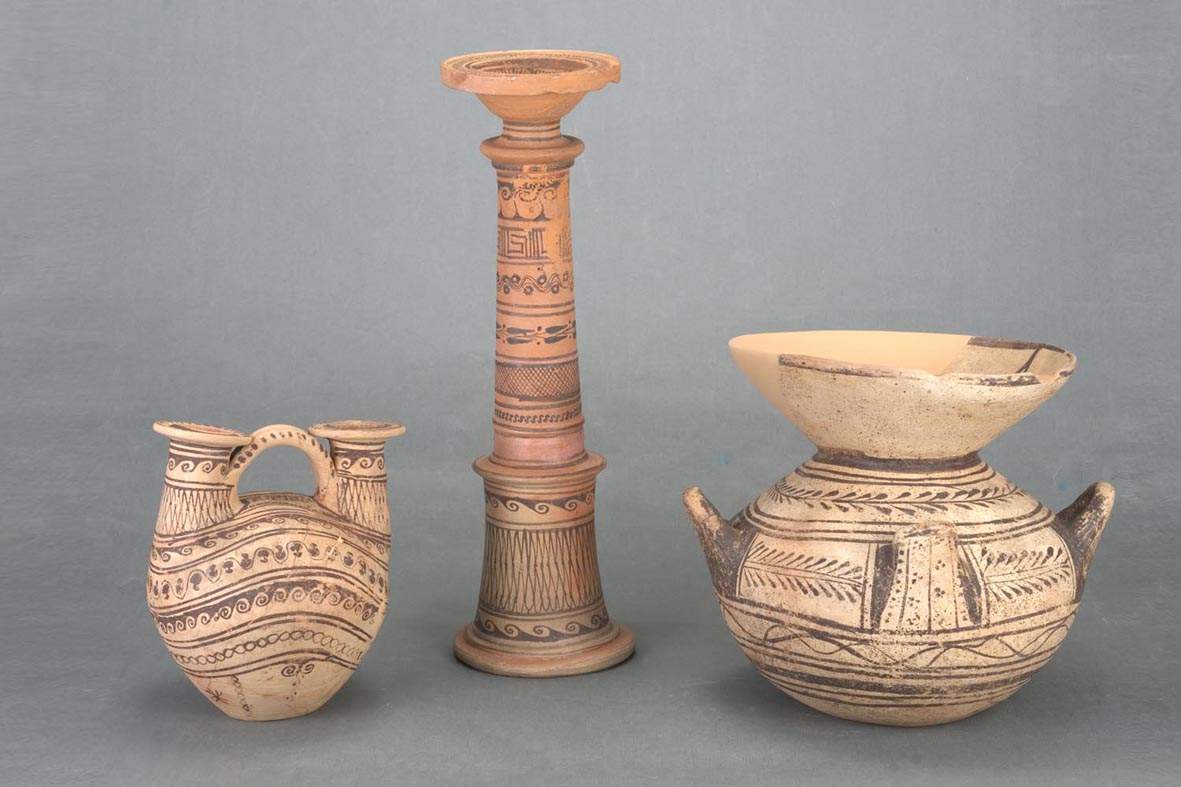Ancient vases on display at the Archaeological Museum at the Roman Theater in Verona: this is the title of the exhibition, curated by Margherita Bolla, opening from October 23, 2021 to October 2, 2022, all dedicated to Etruscan and pre-Roman ceramics. An exhibition, but at the same time also a section of the museum, which for a year will present some of the most interesting pieces from the collection of pre-Roman ceramics (in detail about eighty vases from the seventh to the fourth century B.C. circa) that make up a part of the Archaeological Museum’s rich collection, not normally exhibited to the public.
Particularly striking is the showcase dedicated to the black pottery of the Etruscans, the buccheri, with a monumental vase, part of a group of bucchero vases donated to the Verona Museum in the 19th century by Bernardino Biondelli (born in Zevio in 1804), a renowned linguist, archaeologist, and curator of the numismatic collections of the City of Milan for more than 30 years. The buccheri are distinguished by the typical black color found both on the surface, which is more or less compact and shiny, and in the ceramic body. In fact, in this case, it is not paint superimposed on the walls of the vessel, but a special firing process in the absence of oxygen to prevent the chemical transformations of oxidation that made the iron minerals contained in the clay take on their typical orange color. The word “bucchero” is not Etruscan, but of Spanish origin, and designated a black-colored pottery of South American production imported in the 17th century, very similar to the Etruscan ceramics that thus took its name.
The invention of Etruscan bucchero was due to the desire to create objects that could resemble the expensive bronze services, which were metallic in color and shiny, but were less expensive. The use of bronze kraters, jugs, goblets, and ladles was in fact expected during banquets of the wealthiest members of Etruscan society, who had most likely assimilated this custom from the Greeks, with whom they had had trade relations for centuries.
“After the pandemic and the damage sustained in the August 2020 cloudburst, which forced its closure for renovation work,” said Francesca Briani, councillor for culture for the City of Verona, “the Archaeological Museum at the Roman Theater reopened in April this year to the many visitors, especially foreigners, eager to learn more about the city. This exhibition represents another significant moment in Verona’s path of full cultural recovery, an opportunity to remind us, once again, of the importance of patronage for the expansion of museum collections and the rich heritage preserved in the archives of the civic museums. The eighty or so vases on display, never before exhibited to the public, are in fact part of the extensive collection held by the Archaeological Museum.”
“The exhibition,” Bolla says, “is dedicated to the enhancement of a collection of the Archaeological Museum not normally on public display, which can be admired for a year. It is one of the many stages of the program to enhance the heritage preserved in this Museum. Pottery, which requires great technical skill and craftsmanship, also offers many ideas for the development of educational paths, which can resume in presence after the forced interruption due to the pandemic.”
Image: Vases produced in Daunia (region of ancient Apulia), with geometric decoration, 4th century B.C.
 |
| The fascination of Etruscan and pre-Roman pottery: ancient vases on display at Verona Archaeological Museum |
Warning: the translation into English of the original Italian article was created using automatic tools. We undertake to review all articles, but we do not guarantee the total absence of inaccuracies in the translation due to the program. You can find the original by clicking on the ITA button. If you find any mistake,please contact us.